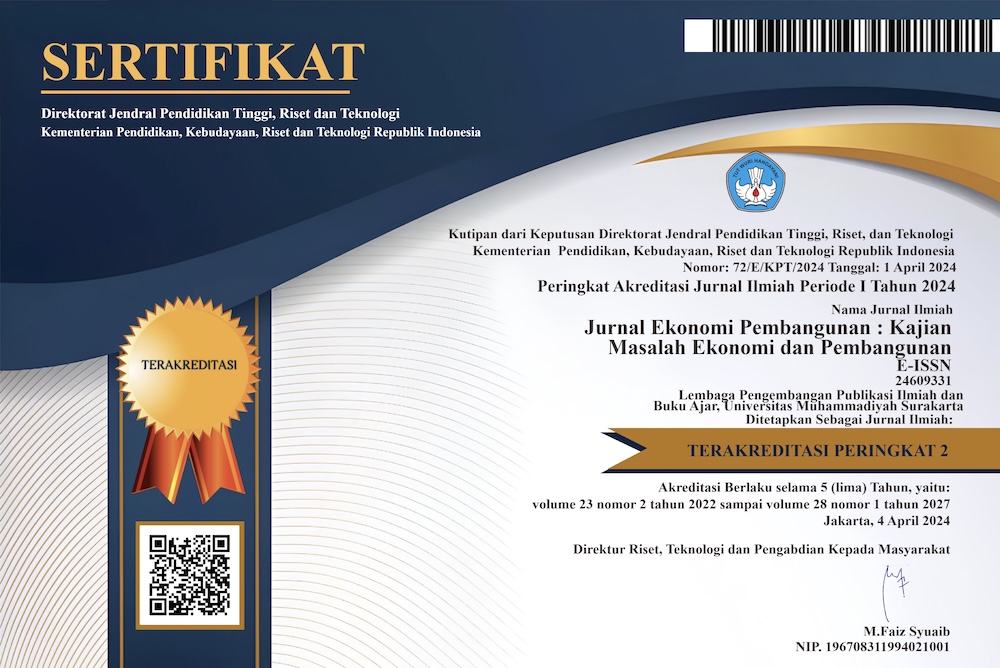Measuring Spatial Disparity in East Java: A Convergence Analysis
DOI:
https://doi.org/10.23917/jep.v23i2.15452Keywords:
Spatial Disparity, Convergence, Economic GrowthAbstract
The development paradigm of development continues to evolve, not only focusing on growth, but also on equity. This study aims to analyze the spatial inequality of economic growth in the districts/ cities of East Java in 2016-2020 using convergence analysis. We use GDP per capita in the t-1 period, the industrial agglomeration index, regional investment, education index, health index, and capital expenditure to determine the magnitude of their influence on the creation of convergence or divergence on growth. economy in East Java. Based on the absolute and conditional convergence analysis that has been carried out, it can be seen if economic growth in 2016-2020 experiences spatial divergence or inequality. The industrial concentration index variable has a significant and negative effect on the formation of spatial inequality in East Java, this means that industrial concentration reduces the growth rate and contributes to the formation of spatial inequality in East Java. In addition, the variables of investment, education index, health index, and capital expenditure alone do not have a significant influence on the formation of spatial inequality in East Java















